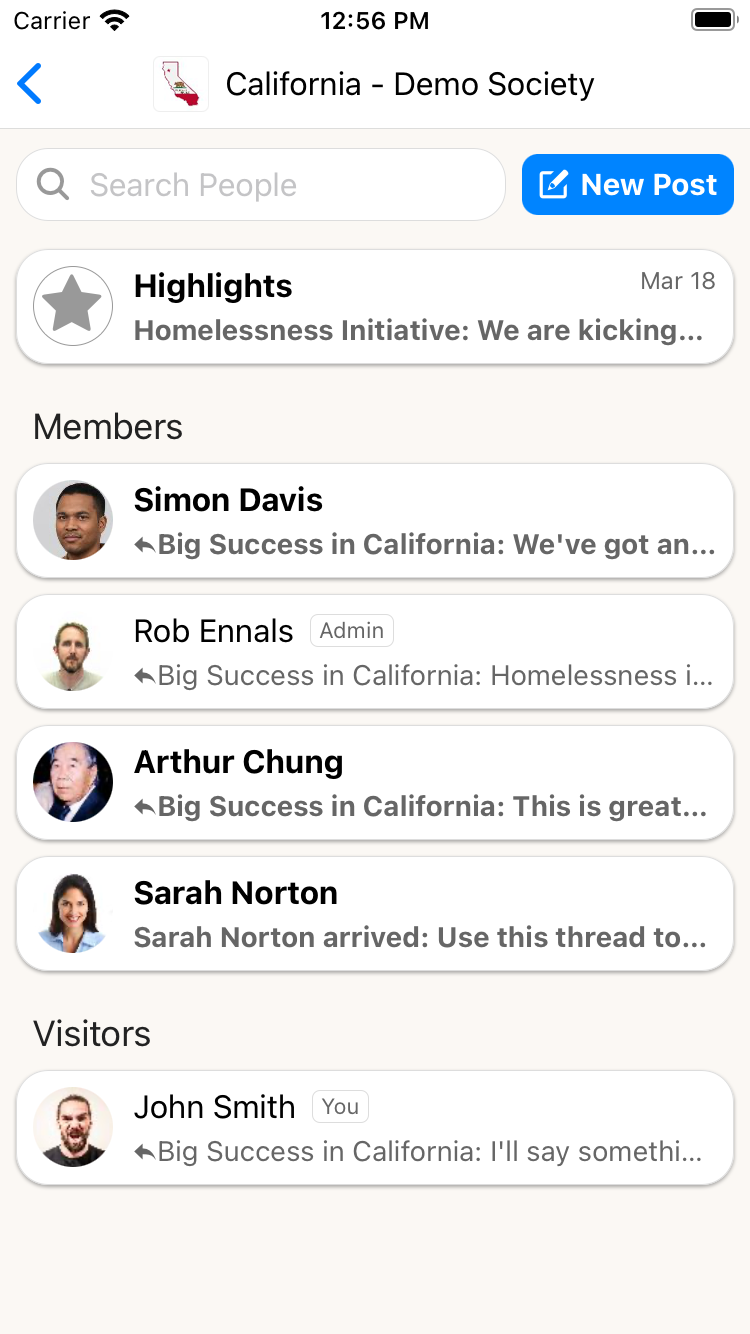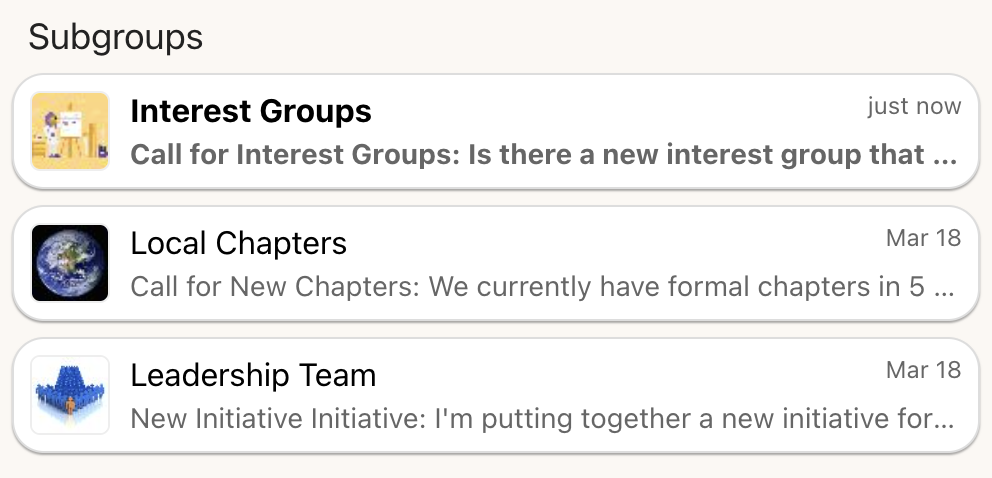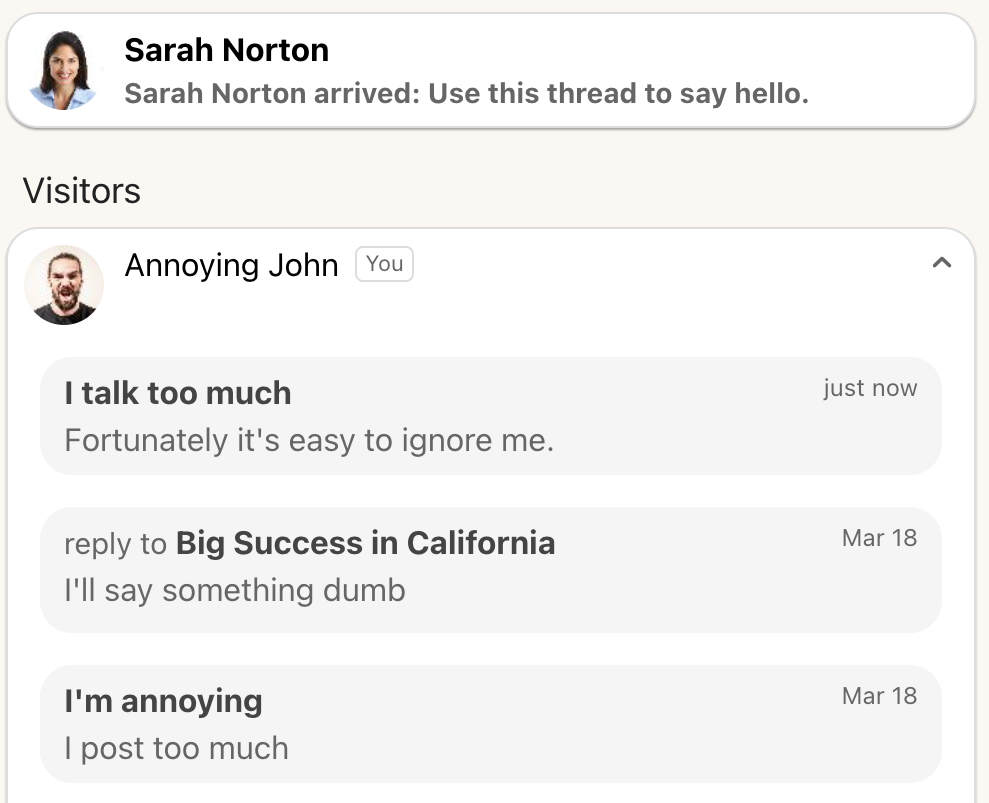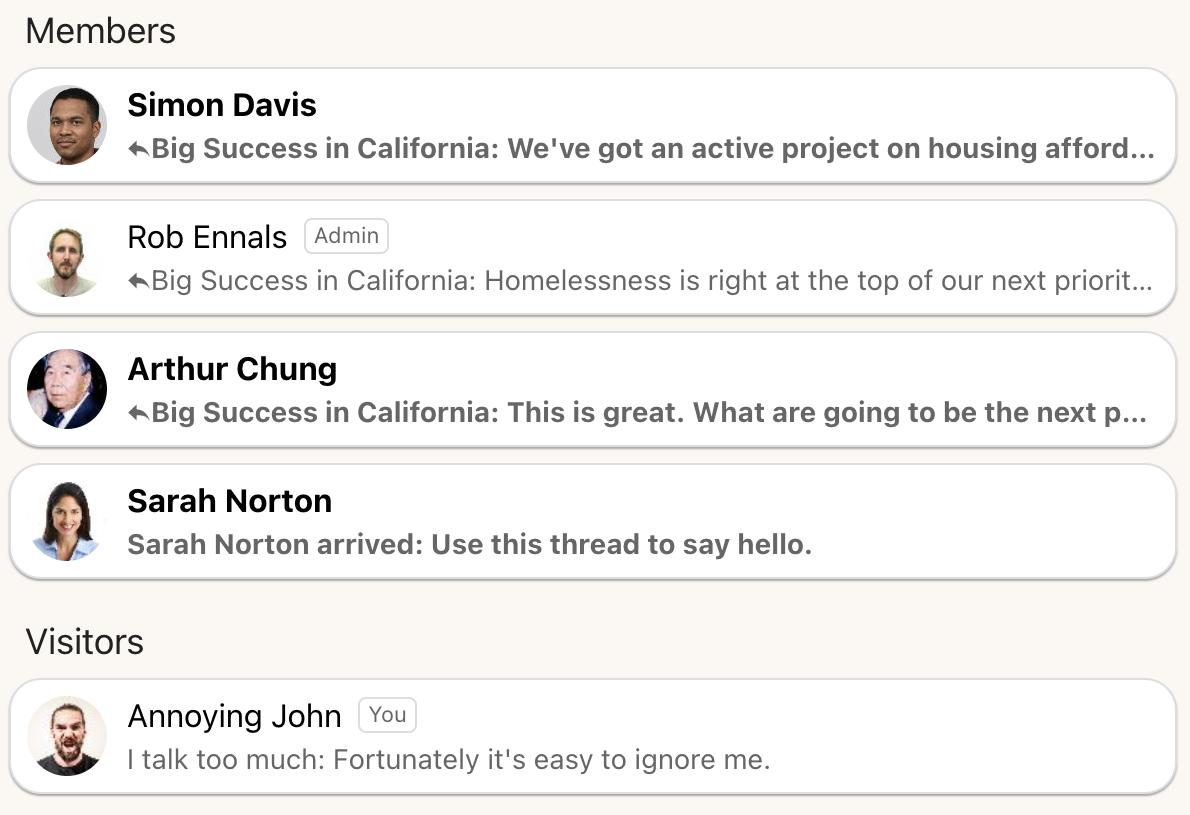Groups organized around People
Talkwell is organized around people. The primary view of a group is the people in it. Expand a person to see what they have been talking about, and maybe jump into conversation with them.


Talkwell is organized around people. The primary view of a group is the people in it. Expand a person to see what they have been talking about, and maybe jump into conversation with them.

Talkwell groups can contain sub-groups. This lets you have small tight-knit (<50) groups that feel socially meaningful, and then connect them together into big groups that can get things done.
Posts highlighted in a sub-group flow up to the parent group and vice-versa, allowing information to flow between groups and keeping every in sync.

Other social products tend to be dominated by the people who talk loudest or talk most.
In Talkwell, each person's posts are clustered under their name, making it easy to make sure that everyone gets heard equally. You can talk as much without worrying about dominating the space, and it's easy to see if a quieter person has something to say.

A common problem with online groups is the apparent tension between making your group open enough that it can obtain new members, without making it so open that it gets taken over by disruptive people who don't respect group norms.
Talkwell distinguishes between Visitors and Members. You can make it easy for people to visit your group, but require them to win your trust before they become a member.

A common problem in online spaces is getting drawn into a public argument. You say something dumb, and then find yourself having to defend it in front of an audience.
In Talkwell, if you say something dumb, you can edit your original message to say something more reasonable. Crucially, and replies to that message will then be marked as "out of date" and can no longer be replied to.

Create your own Talkwell group, or join the Talkwell Open House group to chat with us about Talkwell.